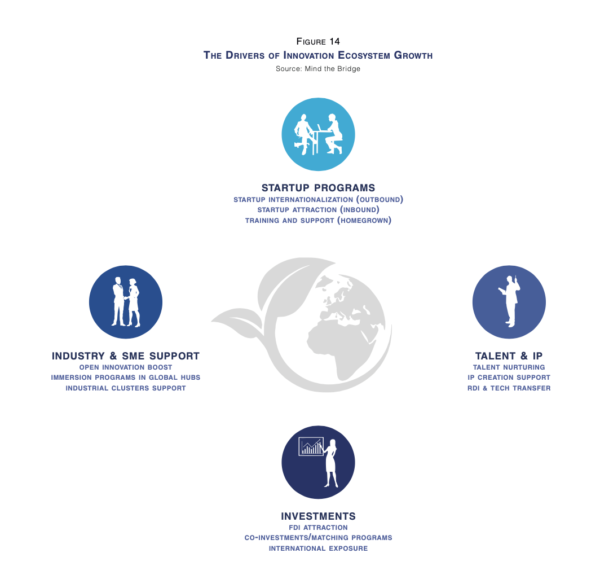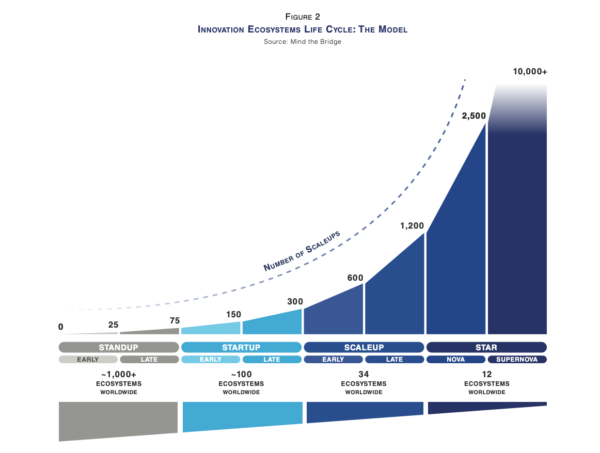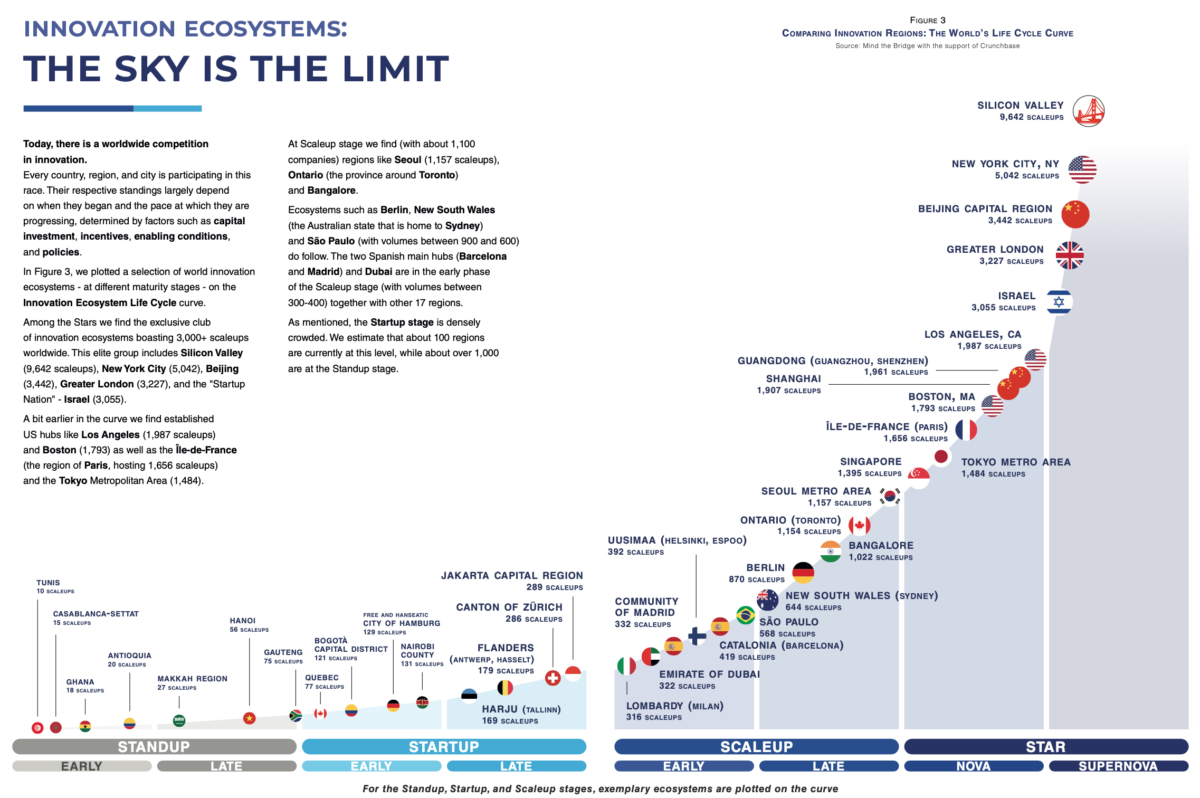The global race for innovation
The world of innovation is not “flat”.
The attention of global “innovation hunters” (VC funds, large corporates, etc.) today tends to gravitate toward a selected few global hotspots distinguished by a high density of scaleups, capital, and talent: Silicon Valley, Israel, and probably less than another dozen of hubs across the globe.
Most of the other local ecosystems (countries, regions, and cities) are still largely off the map. For them scaling and building global connections fast is not an option. Yet, most local governments are prioritizing policies (and dedicating public funding) to grow the local economy through the attraction and promotion of technological innovation.
That said, transitioning across stages of the innovation life cycle requires years.
Based on our data, it takes on average almost 10 years to create a national hub, while another 7-8 years are needed to become a continental hotspot.
Some regions and ecosystems are progressing more rapidly than others by adopting policies and implementing measures that effectively attract capital, talent, and innovative companies. These initiatives also assist leading local startups in accessing funding, as well as business and strategic opportunities beyond their immediate ecosystems. Furthermore, they help local companies in developing open innovation strategies and in addressing their innovation challenges by connecting them with international startups and research hubs.

This suggests that there are best practices employed by entities linked to local innovation ecosystems (like cities, regions, or countries) that could be examined and potentially emulated. Initiatives like Startup Ecosystem Stars that we launched together with the International Chamber of Commerce (ICC) are meant to identify and share benchmarks to allow more local ecosystems to secure a place on the global innovation map.
This Report is aimed at all policy makers who believe innovation is a key driver to grow the GDP of their own region. Their policies empower government related organizations (at city, region, country, or continent level) that implement programs and actions to nurture talent and innovation locally.
In this report, we introduce the concept of the Innovation Life Cycle to enable:
- international comparisons among innovation ecosystems globally – unhampered by limitations related to their current stage and size;
- the estimation of future growth trajectories, allowing for the evaluation of gaps with comparable ecosystems.
While many variables could be considered, we focus this report primarily on the measurement of the number of scaleups (more mature startups) in a region as a key proxy to calculate the future ability of a region to impact their local economy through technology innovation. We then analyze the specific causes (i.e. policies) behind an acceleration of the economy of innovation of a specific region. A similar methodology can be applied using different units of geographical aggregation (city, country, continent).
- Marco Marinucci | CEO, Mind the Bridge
- Alberto Onetti | Chairman, Mind the Bridge


